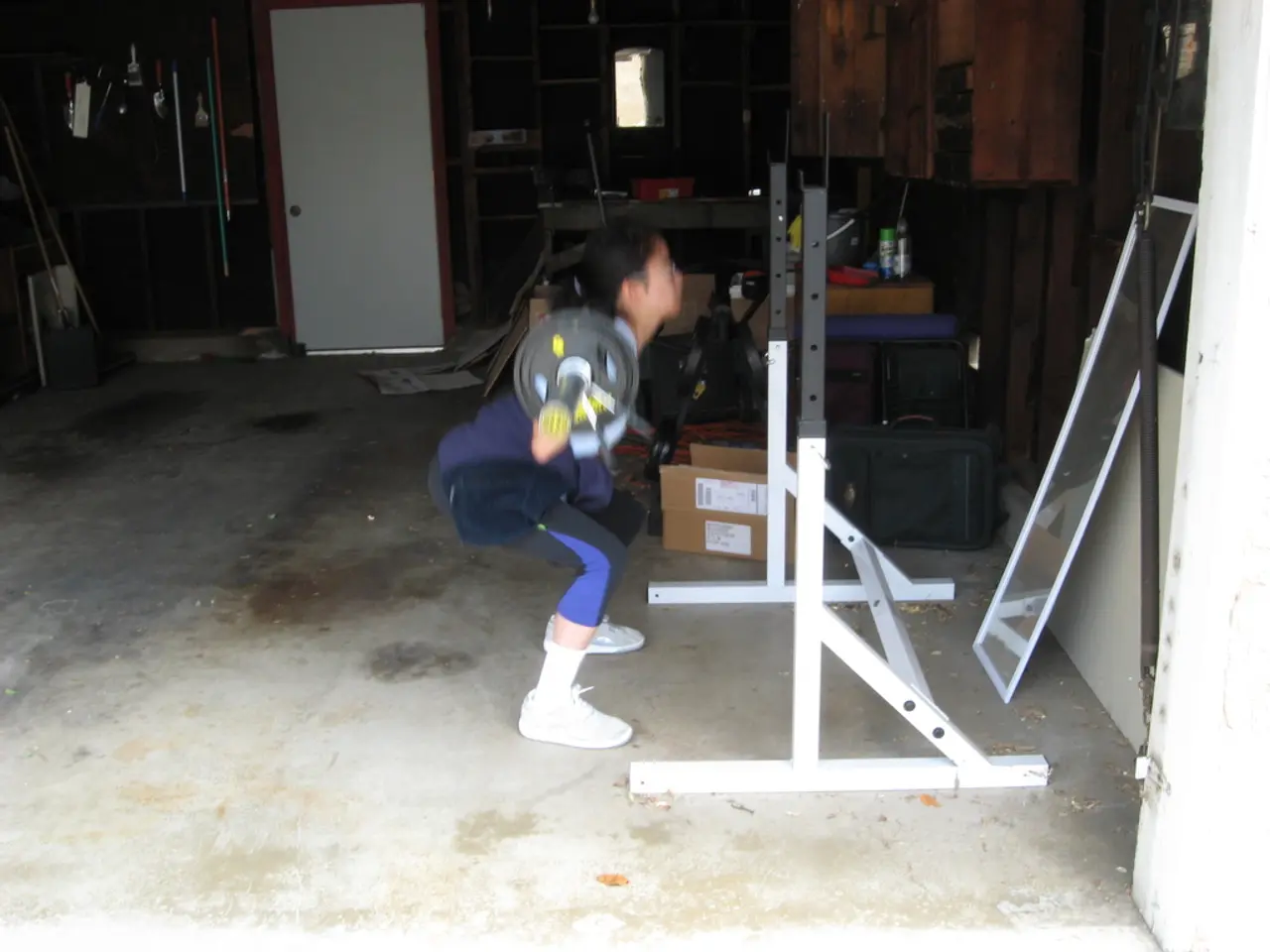Start building strength effectively, even as a beginner, without the need for any exercise equipment with this low-impact method.
=================================================================================
In the realm of fitness, variety is key to achieving optimal results. Two popular training methods that have gained significant attention are isometric and plyometric training. This article will delve into these methods, focusing on the benefits of isometric training and how it can be incorporated into a beginner's exercise routine.
Isometric training, a method that involves the static contraction of a muscle without any movement of joints, offers a unique approach to building strength and muscle. This type of training, which primarily benefits through sustained maximal muscle tension, leads to high muscle fiber recruitment, especially fast-twitch fibers crucial for muscle growth and strength. Compared to dynamic or explosive movements, isometric contractions can recruit up to 10% more muscle fibers, enhancing neural drive and firing rates, which boosts strength development and muscle hypertrophy by providing a strong and prolonged stimulus to the muscles.
One such beginner isometric exercise is the wall sit. To perform a wall sit, lean your back against a wall, slide your back down the wall until your knees are bent at 90°, adjust your feet so your knees are over your ankles, and hold the position with your back flat against the wall and your heels on the floor. The wall sit exercise builds strength in the quads, glutes, and calves. Another beginner exercise is the plank, where you hold your body in a straight line from head to heels, with your forearms on the ground and your toes on the floor.
Isometric training not only enhances strength and muscle growth but also improves the nervous system's efficiency in muscle fiber recruitment and can increase bone mass. Moreover, the lack of movement in isometric training reduces the potential for injury, making it an ideal choice for beginners.
The benefits of isometric training extend beyond static holds. Isometric holds can be used to challenge muscles in a new way, and improvement can be easily measured by holding the position for longer. For each beginner isometric exercise, the goal is to hold the position for 20-60 seconds, doing three sets of each hold.
In addition to isometric training, there is another training method that focuses on enhancing explosive power - plyometric training. Plyometric training improves muscle force generation speed, neuromuscular coordination, and athletic agility through enhanced neural reflexes and sensorimotor integration. However, isometric training is particularly effective for increasing maximal voluntary contraction and gaining strength when a plateau occurs, due to its ability to maintain maximal tension and fatigue muscle fibers thoroughly.
Combining both isometric and plyometric training can be strategically beneficial, as isometric training improves maximal strength and neural efficiency, while plyometrics develop speed and power through dynamic, explosive movements. Rowan Clift, a personal trainer who trains individuals and leads classes at The Gym Group in West Hampstead, and also works with Freeletics, an AI-led fitness app that offers personalized fitness programs, emphasizes the benefits of incorporating both types of training into a fitness routine.
In conclusion, isometric training is a valuable addition to any fitness regimen, especially for beginners. Its unique approach to building strength and muscle, coupled with its reduced potential for injury, makes it an ideal choice for those starting their fitness journey. So, why not give it a try and reap the benefits of isometric training today?
- In fitness-and-exercise and health-and-wellness, isometric training is a unique method that focuses on building strength and muscle by creating sustained maximal muscle tension, which can recruit up to 10% more muscle fibers.
- For beginners in education-and-self-development who are interested in learning more about fitness, online-education resources are available for understanding isometric training and its benefits, such as improving nervous system efficiency, increasing bone mass, and reducing the potential for injury.
- To optimize fitness results and develop both explosive power and strength, a combination of isometric and plyometric training can be strategically beneficial, according to Rowan Clift, a personal trainer who advocates for both static and dynamic movements in a fitness-and-exercise routine.
- Incorporating core exercises like wall sits and planks, which are beginner isometric exercises, into workouts can lead to strength gains and muscle hypertrophy, contributing to overall fitness and wellness.




